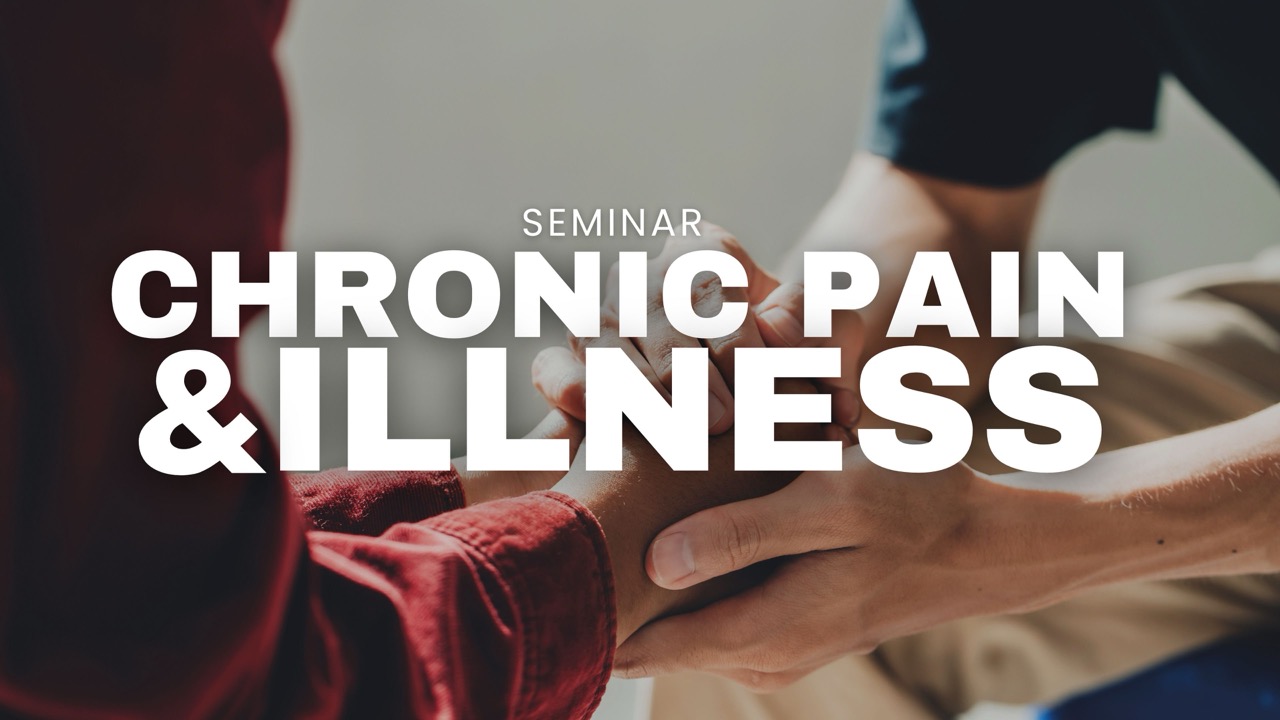What Chronic Pain and Illness Is Like
What Chronic Pain and Illness Is Like
Chronic pain is defined as the presence of ongoing physical pain for three or more months consecutively. As distinguished from acute pain, chronic pain may last past the point of the body's healing in the immediate aftermath of an injury. Chronic illness is “a long-term health condition that may not have a cure.” Furthermore, chronic pain and chronic illness are conditions that affect a tremendous number of individuals. In 2023, nearly one-fourth of U.S. adults experienced chronic pain. Roughly 75% of Americans have a close friend or family member with chronic pain. When it comes to chronic illness, approximately 60% of American adults have some sort of ongoing illness (e.g., heart disease, diabetes, cancer, etc.).
The point of these definitions and statistics is to say that chronic pain and illness are challenging experiences. If you suffer from either of these yourself, it helps to hear words and metaphors put to your situation. If you are the loved one of someone who suffers, you need to do what you can to understand what this experience is like. Below are a few descriptions that I hope will accomplish both of these aims.
As if moving to a new city without a map
- “The elements of life are familiar, but it’s like someone crammed them all into a box and shook them up for a while.” In other words, it’s the hazy middle between living in your hometown and being a foreigner on soil where a completely different language is spoken. Being in a foreign land would almost be better, because at least then the unexpected is expected. But with chronic pain and illness, the body you thought you knew isn’t cooperating with you; at times, it’s your enemy. The friends you thought you knew seem to have forgotten about you or not to understand what you’re going through. The routine you used to know so well has been hijacked by fatigue and constant doctors’ visits.
- “Chronic pain and illness are more suited for the metaphor of ‘climate’ than a ‘season.’” Talking of seasons in a figurative sense is something we all do. “This is just the season we’re in” or “Things are so busy; this season of life with kids is go-go-go,” we say. But that language implies an end. With chronic pain and illness, it doesn’t feel like there will be an end. It feels like the “climate.” It feels like pain is the air we breathe.
Feeling like you’re different from others
- “Church can often seem like the pounding surf of insurmountable tasks: join small groups, volunteer for children’s ministry, go to the men’s or women’s retreat, be part of this evangelistic event. Serve! Serve! Serve! All of these are good things and part of the normal spiritual patterns of many families, but when you’re eating your third frozen pizza of the week for dinner and it’s only Tuesday, these expectations of what good church members do feel overwhelmingly out of reach. It’s not your beliefs that set you apart; it’s that your life pattern is an entirely different shape—the jagged shape of surviving—one that can’t smoothly follow the ‘normal’ lines of prescribed church involvement.”
Feeling different from others can occur despite these people in no way intending to ostracize you. Their intentions are good. But even their efforts to go out of their way to help you feel included can come across as a loud reminder that you’re different; they wouldn’t need to go to such lengths if you were “normal.”
Personal world shrunk by pain
- “My world became increasingly small as numerous specialists were unable to find any intervention to relieve the agony…I gained a reputation as the guy who always stood during worship services, concerts, airplane travel, and meetings of every sort.” Chronic pain and illness shrink our capacity to think beyond our current situation. This is why enjoyment of hobbies and formerly enjoyed pleasures often severely diminishes in these cases
Suffering makes sin easier to fall into
- “Wouldn’t it be wonderful if the pain and pressure of wading through the waters of chronic pain and illness left us immune to attack? Life’s hard enough without having to keep a keen eye out for the roaring lion that would seek to devour us. Vigilance seems a cruel ask for the weary, and yet the reality is that deep suffering often provides fertile ground for trouble. If idle hands are the devil’s workshop, then pain would seem to be his storage shed. Sadness easily metastasizes into bitterness. Frustration begets unwarranted anger. Helplessness morphs into despair.”
These responses are often not high-handed sin. On a case-by-case basis, they might be leaning more towards suffering than sin (e.g., someone provoked to anxiety by their pain, but who is crying out to the Lord for help). Usually, sin and suffering intersect in ways that are not simple to demarcate.
- Ongoing suffering can lead to:
- Guilt – “Am I suffering because of sin in my life?” “I feel like a burden to my family and friends.”
- Anger – When the road is long as well as hard, a sense of unfairness can seep into our souls. “Why me, God?” See Psalm 73.
- Fear of man – “People living with chronic illness are frequently judged by others. Others might see them as being lazy or antisocial because they avoid certain activities. Many people struggle with an ailment that is essentially invisible to others…This uncertainty and invisibility lead others, including family members and friends, to question the validity of their complaints.”
- Anxiety – Ongoing pain >> worry >> isolation >> more worry (and often pain)
Disorienting
- If it seems disorienting that you have been able to provide clear help to others, but are struggling to keep your head above water when you’re in the suffering role, this is to be expected. As a helper, you were able to be more “objective.” You have no such luxury if you’re in the pain yourself.
- “The view from the sky and the view from the ground—where every wall looks the same and every path seems to lead to yet another dead end—are significantly different.”
- Formerly enjoyable activities or shared interests may shift.
- “Chronic pain and illness can quickly steal away all manner of shared interests. Pain may preclude exercise. Dietary restrictions can sideline exploring new foods or eating anything beyond the blandest of diets. Motor hindrances may make model building impossible. If your loved one is your spouse, your patterns of physical intimacy may be significantly changed…”
- Suffering takes “Technicolor” pleasures and converts them into dull grey.
This post is the first in a series deriving from the “Chronic Pain & Illness” seminar that took place at Rocky Creek in September 2025. If you’d like to receive the PDF note packet and audio version of that seminar, you may email allen@rockycreek.church.















